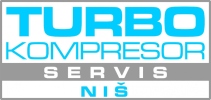Topical Steroid Withdrawal
Typically, steroid creams are used to treat skin inflammation, caused by conditions such as psoriasis and eczema. A woman has revealed how she couldn’t leave the house or even look at herself in the mirror after experiencing horrific withdrawal symptoms from eczema creams. ‘Here I am one year after I stopped using topical steroid creams to treat what I thought was eczema, and I can happily say I’m eighty per cent healed,’ Keri said.
Anabolic steroids are made naturally in the body to control testosterone production. They generally increase body mass, and are often taken by bodybuilders and athletes to boost their performance or appearance. They are much more commonly abused as a result, but they can be prescribed when the individual doesn’t produce enough hormones naturally. We identified 55 reports in the Yellow Card database that are probable reports of topical steroid withdrawal reactions and 62 further reported reactions potentially indicative of topical steroid withdrawal reactions.
How to treat withdrawal from topical corticosteroids
If you do come into contact with someone who has them, tell your healthcare team straight away. You may get some of them, but it is very unlikely that you will have all of them. They check your levels of blood cells and other substances in the blood. The optimum daily dose is determined on the basis of clinical and biochemical response.
- Headaches during steroid withdrawal may be constant or in the form of full-blown migraines.
- Remember to rinse your comb in hot water and use alcohol to sterilise it.
- However, as time passed many patients required systemic corticosteroids at increasingly frequent intervals, some every 6 to 10 weeks.
- Adrenal suppression and increased risk of infection can occur whilst taking these drugs and the steroid warning card should be issued with all prescriptions.
- When alcohol interacts with this system, it begins to lower the levels of testosterone and oestrogen levels increase.
- For further information on using topical corticosteroids safely please see the full Drug Safety Update article and Patient Safety Leaflet.
‘I also suffered pus-filled bumps, cracking, itching, nodules, pain, insomnia, hair loss, shivering, fatigue, depression and brain fog. Patients are also advised to cut down on steroids slowly but using a lower dose and gradually cutting back to, for example, every other day or a few times a week. First described in 1979 in the International Journal of Dermatology, the theory is, over time, the skin becomes ‘addicted’ to the steroids. According to the US National Eczema Association, TSW primarily affects the faces of women who have been using high potency corticosteroids daily for more than 12 months.
Increased numbers of white blood cells
If you’re taking steroids on prescription, your doctor will likely taper your dose when it’s time to come off them to minimise the possibility of any adverse reactions. When used off prescription in much higher doses, anabolic steroids pose significantly increased risks of withdrawal symptoms when stopped. Topical streroid withdrawal has now been recognised as a medical condition after years of campaigning by sufferers.
What are steroids?
The authors reported that resultant signs and symptoms can last longer than 12 months, even with short duration of use. Product information for topical corticosteroids is being updated to include safety anabolic steroids for sale cheap warnings on withdrawal reactions. We have developed a patient safety leaflet to support patients and health care professionals, which includes advice on how to reduce the risk of severe reactions.
If you have a history of depression, you should consider entering inpatient treatment, where caregivers can prescribe medications to help you cope with the withdrawal symptoms. If quickly recognised and treated, the prognosis for steroid withdrawal is generally good. However, without early identification and treatment, further abnormalities may occur, such as electrolyte abnormalities and dehydration. TSW refers to the symptoms which occur when a patient reduces or ceases use of topical steroids.
Types of Steroids
If you need to take both medications, you may be given a medication called a proton pump inhibitor (PPI). There is less chance of this happening with steroid injections or sprays. However, it can occasionally happen if they’re used at high doses and for a long time. Steroids that are injected into a blood vessel (intravenous steroids) may cause more widespread side effects.
Non-steroidal anti-inflammatory drugs
Oxify, one of the UK’s fasted growing and respected Hyperbaric Oxygen centres. Now with three dedicated centres across the North, are seeing fast and amazing results from people with TSW. One regular client at Oxify ‘Leah’, who suffered severely from TSW wanted to share some before and after pictures of just how amazing the treatment has been for her and the results she has seen only over a short time. If used correctly for short periods of time such as 1-2 weeks then they rarely have serious side-effects.
